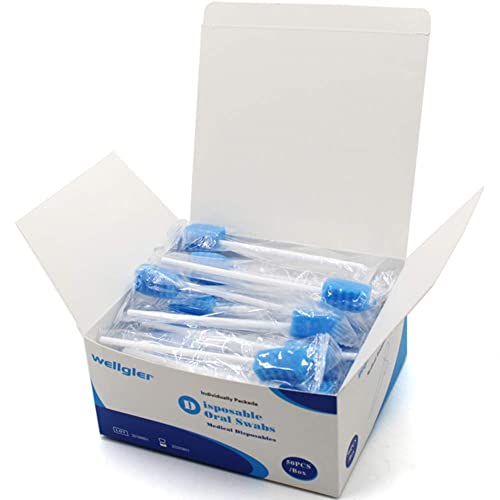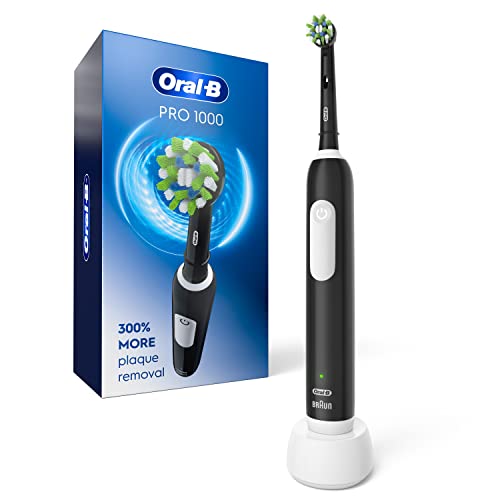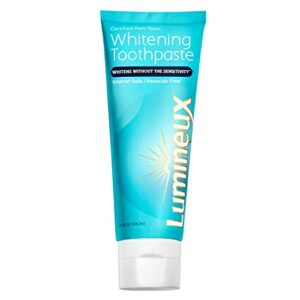In our step-by-step guide, “How to Maintain Fresh Breath,” we aim to provide you with helpful tips on oral care to ensure you have fresh breath throughout the day. We understand that fresh breath is important in our daily lives, whether it be for work, socializing, or simply feeling confident. Our guide will take you through a series of easy-to-follow steps that will assist you in maintaining fresh breath and promoting good oral hygiene.
Achieve a Healthy Smile with These Bestsellers
Brush your teeth properly
To brush your teeth properly, follow these steps:
- Choose the right tools: Start by selecting a soft-bristled toothbrush and toothpaste that contains fluoride. The soft bristles are gentle on your teeth and gums, while fluoride helps to strengthen your teeth and prevent cavities.
- Brush twice a day: Make sure to brush your teeth twice a day, once in the morning and once before bed. Brushing for two minutes each time ensures that you thoroughly clean your teeth. Set a timer or use a toothbrush with a built-in timer to help you keep track of the time.
- Clean all surfaces: Use gentle, circular motions to brush all surfaces of your teeth. Start with the front surfaces, then move to the back and chewing surfaces. Be thorough and make sure to reach every tooth, including the ones at the back of your mouth.
- Don’t forget your tongue: Brushing your tongue is an important step in maintaining good oral hygiene. Bacteria can accumulate on the surface of your tongue, leading to bad breath and other oral health issues. Gently brush your tongue using the bristles of your toothbrush or a tongue scraper.
Remember, proper brushing technique is essential for maintaining healthy teeth and gums. By following these simple steps, you can ensure that you are taking good care of your oral health.
Floss daily
- Prepare the floss: Take approximately 18 inches of dental floss and wrap it around your middle fingers, leaving a few inches of floss in between. This will give you enough length to work with.
- Slide between your teeth: Hold the floss tightly between your thumbs and index fingers. Gently slide the floss up and down between your teeth, using a back-and-forth motion. Be careful not to snap the floss into your gums, as this can cause irritation.
Example:“`
- Wrap the floss around your middle fingers, leaving a few inches of floss in between.
- Hold the floss tightly and gently slide it between your teeth using a back-and-forth motion.“`
- Curve around each tooth: As the floss reaches the gumline, curve it into a “C” shape around one tooth. Slide the floss gently under the gumline, making sure to clean the sides of the tooth as well. Repeat this process for each tooth, using a fresh section of floss each time.
Example:3. Curve the floss around one tooth in a "C" shape and slide it under the gumline.4. Repeat this process for each tooth, using a fresh section of floss each time.
- Clean under the gumline: It’s essential to clean under the gumline as this is where plaque and food particles can accumulate. Take your time and be gentle when flossing in this area to avoid causing any discomfort or bleeding.
Example:5. Ensure you clean under the gumline, where plaque and food particles can accumulate.6. Take your time and be gentle when flossing in this area.
Remember: Flossing should be a regular part of your oral hygiene routine. By flossing daily, you can effectively remove debris and plaque from between your teeth and along the gumline, promoting healthier teeth and gums.
Use mouthwash
After brushing and flossing, rinse your mouth with an antibacterial mouthwash. This step is crucial in maintaining good oral hygiene and preventing bad breath. Choose a mouthwash that contains ingredients like chlorhexidine or cetylpyridinium chloride, as these are effective in killing bacteria. To use, pour a small amount of mouthwash into a cup and swish it around your mouth for about 30 seconds, making sure to reach all areas. Then, spit it out into the sink. Remember, do not swallow the mouthwash as it may cause harm if ingested.
Clean your tongue
Scrape or brush your tongue gently to remove bacteria and prevent bad breath. Start at the back and move forward, clearing away any buildup. Rinse your mouth afterwards for a clean and fresh feeling.
Stay hydrated
Drinking plenty of water is essential for maintaining fresh breath. When we are dehydrated, our mouth becomes dry, leading to the growth of bacteria that can cause bad breath. To prevent this, make sure to drink at least 8 glasses of water every day. This will help keep your mouth moisturized and wash away any food particles or bacteria that may contribute to bad breath. Remember to sip water throughout the day and carry a water bottle with you to stay hydrated.
Avoid certain foods and drinks
Some foods and drinks can leave an unpleasant odor in your mouth. Limit your intake of strong-smelling foods like garlic, onions, and spices. Avoid sugary drinks and alcohol, as they can contribute to bad breath as well. Brush your teeth, use mouthwash, and drink plenty of water to help freshen your breath.
Quit smoking
To improve your breath and enjoy numerous health benefits, it’s essential to quit smoking. Start by setting a quit date and informing your loved ones about your decision. Seek support from friends, family, or support groups. Remove all smoking paraphernalia from your surroundings and find healthy ways to cope with cravings, such as exercising or chewing gum. Stay motivated by reminding yourself of the positive impacts quitting smoking will have on your breath, overall health, and wellbeing.
Chew sugar-free gum
Chew sugar-free gum to stimulate saliva production. This helps wash away bacteria and freshen your breath. Look for gum containing xylitol, a natural sweetener that can also prevent tooth decay.
Visit your dentist regularly
Schedule regular dental check-ups and cleanings to maintain fresh breath. During these appointments, your dentist will thoroughly examine your mouth, teeth, and gums to detect any oral health issues that may be causing bad breath. They will then provide appropriate treatment to address these issues and help you achieve and maintain fresh breath.
Eat a balanced diet
To prevent bad breath, it is essential to maintain a healthy diet that includes a variety of fruits, vegetables, and whole grains. These foods not only provide essential nutrients for overall health but also stimulate saliva production, which helps to cleanse the mouth and prevent the buildup of bacteria that can cause bad breath. Here are some examples of foods to include in your diet:
- Fruits: Incorporate fruits such as apples, oranges, and berries, as they are high in vitamin C and antioxidants that promote gum health and fresh breath.
- Vegetables: Include leafy greens like spinach and kale, as well as crunchy vegetables like carrots and celery. These foods help stimulate saliva flow and act as natural cleansers for the teeth and gums.
- Whole grains: Opt for whole grains like brown rice, quinoa, and whole wheat bread instead of refined grains. These provide more fiber and nutrients, promoting a healthy digestive system and reducing the likelihood of bad breath caused by digestive issues.
By incorporating these foods into your daily diet, you can help maintain fresh breath and overall oral health. Remember to stay hydrated and practice good oral hygiene habits, such as brushing and flossing regularly, to further prevent bad breath.
Achieving Long-lasting Freshness
In conclusion, we have outlined a comprehensive guide on how to maintain fresh breath. We discussed the importance of proper oral hygiene, including regular brushing and flossing, as well as the significance of tongue cleaning. We also emphasized the significance of a healthy diet and lifestyle, as they directly impact our breath. Additionally, we explored the benefits of staying hydrated and avoiding certain foods and beverages that can contribute to bad breath. Lastly, we highlighted the importance of regular dental check-ups and professional cleanings to ensure optimal oral health. By following these steps, you can confidently maintain fresh breath and enjoy the benefits of fresh and healthy oral hygiene.
Essential Supplies
Freshen Your Breath Effortlessly
Essential Steps for Maintaining Optimal Oral Hygiene
- Brush your teeth at least twice a day: Brushing your teeth is an essential part of oral care. Make sure to use a soft-bristled toothbrush and fluoride toothpaste. Brush for at least two minutes, covering all surfaces of your teeth, including the front, back, and chewing surfaces
- Floss daily: Flossing helps remove plaque and food particles from between your teeth and along the gumline. Use about 18 inches of dental floss, winding it around your fingers and gently guide it between each tooth. Curve the floss against the tooth and move it up and down to remove any debris
- Rinse with mouthwash: Using an antimicrobial mouthwash can help kill bacteria and freshen your breath. After brushing and flossing, swish around a mouthwash for about 30 seconds, then spit it out. Be sure to choose a mouthwash that is alcohol-free and approved by your dentist
- Limit sugary and acidic foods: Consuming excessive amounts of sugary and acidic foods can contribute to tooth decay and enamel erosion. Try to limit your intake of candies, sodas, fruit juices, and other sugary or acidic treats. If you do indulge, rinse your mouth with water afterward or brush your teeth within 30 minutes
- Visit your dentist regularly: Regular dental check-ups are crucial for maintaining good oral health. Schedule appointments with your dentist every six months for a professional cleaning and examination. Your dentist can identify any potential issues and provide appropriate treatment before they become more severe
- Remember, these oral care tips are important for beginners, but they are also beneficial for everyone. Taking care of your oral health not only helps prevent dental problems but also contributes to your overall well-being
Caring for Your Smile: Frequently Asked Questions
Are electric toothbrushes more effective than manual ones?
Yes, electric toothbrushes are generally considered more effective than manual ones. They offer several advantages that can contribute to better oral hygiene. The rotating or vibrating bristles of electric toothbrushes help remove plaque and food particles more efficiently, reducing the risk of tooth decay and gum disease. Additionally, many electric toothbrushes have built-in timers to ensure that we brush for the recommended two minutes. This helps to improve our brushing technique and ensure thorough cleaning. However, it is important to note that using a manual toothbrush with proper technique can also be effective in maintaining good oral hygiene. Ultimately, the choice between an electric or manual toothbrush depends on personal preference and individual oral health needs.





















